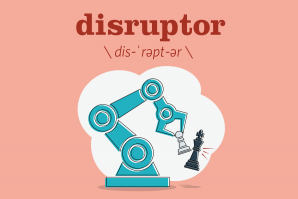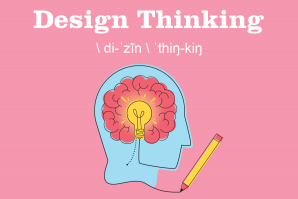Try assuring a client or a superior that a project is being done in accordance with “best practices,” and you may be met with the reaction, “Well, obviously, I would hope so.” The term is used in most industries to mean the preferred and standard way of achieving desired outcomes. Professionals use the term as a guiding principle or methodology for consistency and to drive the greatest results. Although it was first recorded in the early 1980s, the concept of “the best method” goes back to just over a century ago.
The Buzz
For Allison Baker, senior copywriter at Eyeconic, the e-commerce arm of VSP vision insurance, “best practice” means being succinct with copy and favoring clarity over flowery language. Baker admits she has a disdain for the term. In addition to being overused, she says it can be tempting to use it purely as a means to persuade. “A lot of people use it to prove a point that they don’t even have to back up. (It’s almost like) because you used the nebulous term ‘best practice,’ it’s biblical at that point, it’s canon.”
It can also be overly broad. “A best practice for me in my work may not work for you. Something that works for me in (copywriting for) social media may work for our brand, but it might be the worst practice for another brand,” Baker says.
In certain disciplines, like marketing, there’s not necessarily a ton of “real-world consequences when a best practice is broken,” she says. Maybe less return on investment, “but for something like manufacturing, the consequences are real. I think of the (Samsung Galaxy Note 7 phone) that came out a couple years ago that was exploding. What an erosion of a brand in just a few days.”
The Word
How does a company come up with best practices in the first place? When it comes to the behavioral variety, they’re often established from the top down as part of the company culture. “In my immediate team, collaboration, humility and hard work are valued,” Baker says. As for the performance sort, sometimes they’re prescribed after a procedural failure (see exploding phones above). But ideally, a company’s set of best practices is developed in house, thoughtfully and methodically.
“One thing we do as a company is test … one (piece of copy or graphic) against the other. We also talk to others.” Sharing information across departments gets at the knowledge-expanding spirit of best practices.
But if following best practices is always regarded as “best,” how does one break out to try something outside the standard approach? “I think the best way to push back against an established best practice is with data. Sometimes intuition is totally valid, but I think showing with data that, hey, maybe we should experiment with something else, is probably going to sway your audience. A best practice is not a best practice unless it’s continually tested.”
Recommended For You

Buzzwords: Big Data
Huge amounts of data about consumer preferences that is collected and analyzed to help companies predict future behavior
The term “big data” is practically synonymous these days with the Big Bad Wolf. (Cambridge Analytica ring a bell?) But is big data really that big of a deal?

Buzzwords: Disruptor
A company, technology, good or service that is so innovative and widely adopted it disrupts an existing market
In ordinary English, “disruptor” might conjure up images of a kid acting out in class, or someone holding up traffic. Among the startup set, though, disruptor has become one of the highest compliments one can receive — or give to oneself.

Buzzwords: Talent Brand
An employer’s public-facing identity that reflects what it’s like to work at the company
Although companies may try to appear glossy and appealing on that platform, it can still be informative to gauge the company’s values, perks and just how genuine the smiles on employees’ faces may be.

Buzzwords: Design Thinking
A methodology that provides a solution-based approach to solving problems.
Various iterations of “design thinking” have come into play over the years, but the process as we currently know it consists of five steps: empathize, define, ideate, prototype and test.



